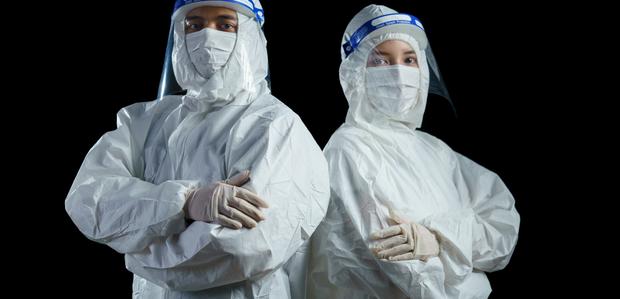Department of General Medicine

The Department of General Medicine is one of the most important departments of any medical organization as this department is the first to come in contact with the patients. It is from here; that the patients are referred to specialists if required. Being one of the best hospitals for general medicine in Hyderabad, we provide you with amongst the best general medicine doctors in Hyderabad.
The Department of General Medicine deals with the prevention, diagnosis, and non-surgical treatment of all types of diseases. This is the first check-up, which will be a physical examination done on the patients when they come to the hospital. A general physician will do the necessary tests and then recommend all the treatments. The results of these tests, examination, and diagnosis are then correlated to the final diagnosis. The general physician then gives the necessary treatment or sends you to a speciality doctor for further treatment.
The department of internal medicine at Gleneagles Hospital, Lakdi-ka-pul is one of the best hospitals for general medicine in Hyderabad which provides excellent treatment and is a one-stop solution. Adding to this, we have some of the best general medicine doctors in Mumbai, modern specialists, and 24-hour pharmacy, which makes it an all-around solution that the patients are looking for.
We act as a support system to all the other departments, including the ICU, through 24/7 services that include:
- 24/7 pre-operative assessments for all significant surgeries
- Comprehensive geriatric assessment, nutrition care, and advice
- Preventive health check-up programs
- Palliative care & rehabilitation services
- Systematic management of lifestyle diseases such as Obesity, Diabetes, Hypertension, and Epidemic Illnesses like Dengue, H1N1, etc.
In the case of general medicine, it is very important to opt for the best solutions as it greatly affects your general, physical and mental health. Renowned as one of the best hospitals for general medicine in Hyderabad, we assure you to be attended by the best general medicine doctors in Hyderabad. Our abled doctors put forward their expertise and experience to provide you with solutions personalized to your medical needs. We provide you with the best medical facilities and infrastructure to aid our patients which makes us one of the best internal medicine hospitals in Hyderabad. A wide range of diseases is attended to at our premise’s form general sickness to complex and chronic disease management. Some services we offer include:
- Diabetes management
- Mental health assessment
- Education Programs
- Blood Pressure check up
- Treatment for Asthma
- Treatment for Allergies
- Lung Infections
- Treatment for Chronic Cough
- Treatment for Sinusitis
- Treatment for Tuberculosis
- Treatment for Pneumonia
Our comprehensive and collaborative treatment ensures that you get back to your normal life routine as soon as possible. We take pride in bringing modern technologies from around the globe for the best possible diagnosis and treatment by world-class measures. We study the patient with the best possible consultation before referring you to a specialist if required. Our doctors specialize in internal medicine to provide a trauma-less aid to their patients.
We cater to the diagnosis and treatment of various general diseases:
- Abscess
- Anaplasmosis
- Anorexia
- Antibiotic-associated Diarrhoea
- Back pain
- Breast cyst
- Breast pain
- Buerger’s disease
- Carpal tunnel syndrome
- Chickenpox
- Chikungunya
- Chlamydia
- Chronic Fatigue Syndrome
- Dehydration
- Dengue Fever
- Diarrhoea
- Dizziness
- Ebola virus
- Oedema
- Essential thrombocythemia
- Mediterranean fever
- Fibromyalgia
- Folate deficiency Anaemia
- Gangrene
- Genital Herpes
- Genital warts
- H1N1 influenza
- Halitosis
- Heat rash
- Heatstroke
- Hemochromatosis
- Hemophilia
- Herpes Zoster Shingles
- High cholesterol
- HIV AIDS
- HPV Infection
- Hypercalcemia
- Hypereosinophilic Syndrome
- Hyponatremia
- Hypothermia
- Idiopathic Thrombocytopenic Purpura (ITP)
- Infectious diseases
- Influenza
- Lactation mastitis
- Laryngitis
- Latex allergy
- Leprosy
- Leucoplakia
- Listeria Infection
- Lupus
- Lyme Disease
- Lymphadenitis
- Lymphedema
- Malaria
- MRSA
- POEMS syndrome
- PolycythemiaVera
- Raynaud’s disease
- Secondary hypertension
- Sepsis
- STDs
- Syphilis
- Tetanus
- Tick-borne diseases
- Trichomoniasis
- Typhoid fever
- Weight loss
- Whooping cough
- Wilson’s disease
The very first step in general diagnosis is detection by knowing the symptoms of the disease. Getting familiar with the patient’s medical history is the next important step in this case. Depending on this, various tests like urine tests, blood tests, stool tests, etc. will be carried out and further treatments will be finalized.
Mental and emotional health analysis of the patients is also important in numerous cases. Also, a physical examination is another important aspect of the general medicine department.
- What types of conditions are treated by the General Medicine Department?
The General Medicine Department, led by physicians commonly known as internists, addresses a diverse array of medical conditions. These may include, but are not limited to, diabetes, hypertension, respiratory disorders, gastrointestinal issues, infectious diseases, and more.
- How do General Medicine doctors contribute to the management of chronic conditions?
General Medicine doctors play a vital role in managing chronic conditions through the provision of ongoing care, medication management, lifestyle advice, and coordination with other specialists as necessary.
- How often should I schedule routine check-ups with a General Medicine doctor?
The frequency of routine check-ups may vary based on factors like age, health status, and existing medical conditions. It is advisable to adhere to the guidance of your General Medicine doctor regarding the recommended schedule for check-ups.
FAQ
Why Choose Us
-
Patient Experience
Your care and comfort are our top priorities. We ensure that the patients are well informed prior to every step we take for their benefit and that their queries are effectively answered.
-
Latest Technologies
The Gleneagles Hospitals' team stays up to date on the advancements in medical procedures and technologies. Experience the Future Healthcare Technologies now at Gleneagles Hospitals.
-
Providing Quality Care
Strengthening lives through compassionate care, innovative therapies and relentless efforts. It reflects in the DNA of our passionate team of doctors and dedicated clinical staff.










